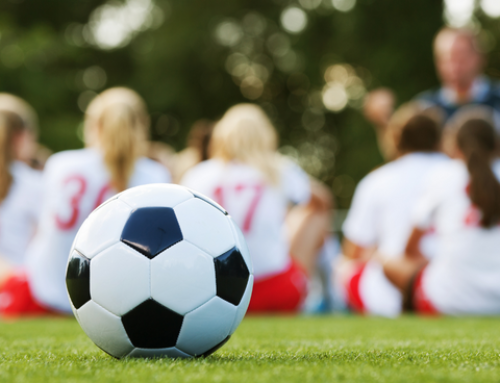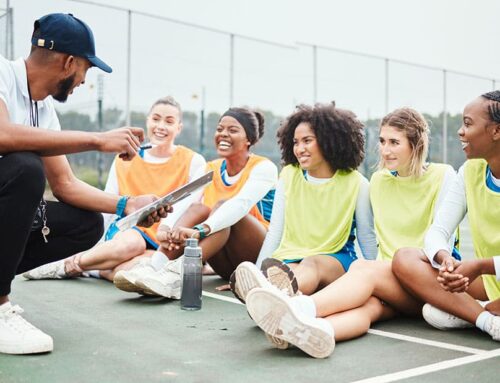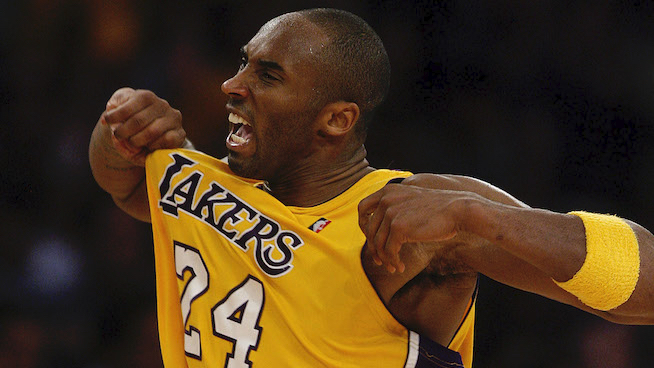Whether you are training for CrossFit or to compete at the elite level of another sport, former elite gymnast and renowned movement coach Carl Paoli believes four bodyweight exercises, when executed perfectly, could be the key to unlocking your full potential as an athlete.
At the Reebok CrossFit Games in 2012, the best CrossFit athletes in the world clashed in 15 different events over the span of five days. The grind included a triathlon, an obstacle course, a “Track Triplet”—a three-round circuit of Split-Snatches, Muscle-Ups and 400-Meter Runs—and a “Chipper,” consisting of six different athletic movements, including Box Jumps, Muscle-Ups and Power Cleans. The last event was Fran, the classic CrossFit couplet of Thrusters and Pull-Ups.
The women’s winner in 2012 was Iceland’s Annie Thorisdottir, who successfully defended her 2011 title.
One of Thorisdottir’s coaches was Carl Paoli, a former competitive gymnast, now a movement coach specializing in strength and conditioning. In an interview conducted after the victory, I asked Paoli what most impressed him in his athlete’s title defense.
“Her hands,” Paoli replied with a smile. “Her hands are in perfect condition.”
RELATED: 4 Lessons From a CrossFit Master
Paoli explained that despite Thorisdottir’s incessant exposure to high-repetition exercises like Muscle-Ups and Pull-Ups, her hands never tore. Tape or gloves are common in the CrossFit Games and in CrossFit boxes everywhere, but Thorisdottir—who weighs 147 pounds—required neither.
“An athlete may have everything in order, but if, for example, a slight deviation from good position and good principles of movement occurs, it will express itself as some sort of aberration,” Paoli says. “Like torn-up hands.”
Consider the Kipping Pull-Up.
Paoli says, “If you have tight shoulders and you’re performing Kipping Pull-Ups, you’ll inevitably favor the lower half of the body.” This error will project itself through some form of wear and tear. As Paoli explains, “You might end up bending the elbows, which creates rotation in the hands, enough to start weakening your grip, and you squeeze. Something has to go, and the skin is sensitive.”
Paoli’s ultimate point regarding Kipping Pull-Ups—as well as several other compound body movement exercises—is that any athlete seeking to master the basics of human movement should practice them in his or her training.
In Freestyle: Maximize Sport and Life Performance with Four Basic Movements, Paoli presents step-by-step progressions for what he considers four ideal bodyweight movements: the Pistol, Handstand Push-Ups, Muscle-Ups and Burpees.
What would a football player or baseball player have to gain from performing a series of bodyweight gymnastics movements that lead to something like a Kipping Pull-Up and on to a Muscle-Up?
According to Paoli, it’s a key expression of full-body power. He says, “It’s the wave of power created through the kinetic chain you’d use to get over an obstacle. You row with your body weight, whether on gymnastics rings or a pull-up bar. It’s a fundamental pattern of movement mechanics.”
Paoli believes the real value of pursuing these movements is in the learning process—that a form of skill transfer occurs, and as you learn to fire the neurological patterns that generate the right movement, you begin to assimilate new possibilities in how you generate power and leverage while playing your sport. The hip drive tapped to generate a Kipping Pull-Up or Muscle Up help an athlete sort out a golf swing or an open-field tackle.
Developing a broad set of nuanced movement possibilities is the goal of Paoli’s philosophy. Concerning the skill transfer aspects of the four bodyweight movements, he says, “That’s my central concept. I don’t want just to teach you a single movement. I want you to follow through the entire progression of movements. Once we have that progression in place, you have a very broad movement vocabulary from which to draw.”
This vocabulary of movement, Paoli explains, becomes even more important in events where fatigue plays a big factor. Recently, while giving a talk at a running shoe store in San Francisco, he was asked what to do when you’re in a 50-mile ultra and your form starts breaking down. According to Paoli, if a runner has put in the work toward the bodyweight progressions, he or she would be able to construct a new movement strategy that doesn’t sacrifice the essentials of good movement: head position, neutral spine and extended hip. “You want this to happen without even thinking about it,” he says.
This all ties back to Paoli’s pride in seeing an athlete he coached win the CrossFit Games without a hint of injury. Over the course of the multi-day championship, endurance and stamina are tested as much as Olympic lifting skill, strength and power. It is not uncommon to see all manner of breakdowns in form and mechanics. Paoli is unmoved by the bloodied, ripped up hands CrossFitters sometimes display like a badge of honor. To him, it means they haven’t mastered good mechanics. Thorisdottir’s unscathed hands after days of extreme competitions were as optimal as it gets for a movement coach.
RECOMMENDED FOR YOU
MOST POPULAR
Whether you are training for CrossFit or to compete at the elite level of another sport, former elite gymnast and renowned movement coach Carl Paoli believes four bodyweight exercises, when executed perfectly, could be the key to unlocking your full potential as an athlete.
At the Reebok CrossFit Games in 2012, the best CrossFit athletes in the world clashed in 15 different events over the span of five days. The grind included a triathlon, an obstacle course, a “Track Triplet”—a three-round circuit of Split-Snatches, Muscle-Ups and 400-Meter Runs—and a “Chipper,” consisting of six different athletic movements, including Box Jumps, Muscle-Ups and Power Cleans. The last event was Fran, the classic CrossFit couplet of Thrusters and Pull-Ups.
The women’s winner in 2012 was Iceland’s Annie Thorisdottir, who successfully defended her 2011 title.
One of Thorisdottir’s coaches was Carl Paoli, a former competitive gymnast, now a movement coach specializing in strength and conditioning. In an interview conducted after the victory, I asked Paoli what most impressed him in his athlete’s title defense.
“Her hands,” Paoli replied with a smile. “Her hands are in perfect condition.”
RELATED: 4 Lessons From a CrossFit Master
Paoli explained that despite Thorisdottir’s incessant exposure to high-repetition exercises like Muscle-Ups and Pull-Ups, her hands never tore. Tape or gloves are common in the CrossFit Games and in CrossFit boxes everywhere, but Thorisdottir—who weighs 147 pounds—required neither.
“An athlete may have everything in order, but if, for example, a slight deviation from good position and good principles of movement occurs, it will express itself as some sort of aberration,” Paoli says. “Like torn-up hands.”
Consider the Kipping Pull-Up.
Paoli says, “If you have tight shoulders and you’re performing Kipping Pull-Ups, you’ll inevitably favor the lower half of the body.” This error will project itself through some form of wear and tear. As Paoli explains, “You might end up bending the elbows, which creates rotation in the hands, enough to start weakening your grip, and you squeeze. Something has to go, and the skin is sensitive.”
Paoli’s ultimate point regarding Kipping Pull-Ups—as well as several other compound body movement exercises—is that any athlete seeking to master the basics of human movement should practice them in his or her training.
In Freestyle: Maximize Sport and Life Performance with Four Basic Movements, Paoli presents step-by-step progressions for what he considers four ideal bodyweight movements: the Pistol, Handstand Push-Ups, Muscle-Ups and Burpees.
What would a football player or baseball player have to gain from performing a series of bodyweight gymnastics movements that lead to something like a Kipping Pull-Up and on to a Muscle-Up?
According to Paoli, it’s a key expression of full-body power. He says, “It’s the wave of power created through the kinetic chain you’d use to get over an obstacle. You row with your body weight, whether on gymnastics rings or a pull-up bar. It’s a fundamental pattern of movement mechanics.”
Paoli believes the real value of pursuing these movements is in the learning process—that a form of skill transfer occurs, and as you learn to fire the neurological patterns that generate the right movement, you begin to assimilate new possibilities in how you generate power and leverage while playing your sport. The hip drive tapped to generate a Kipping Pull-Up or Muscle Up help an athlete sort out a golf swing or an open-field tackle.
Developing a broad set of nuanced movement possibilities is the goal of Paoli’s philosophy. Concerning the skill transfer aspects of the four bodyweight movements, he says, “That’s my central concept. I don’t want just to teach you a single movement. I want you to follow through the entire progression of movements. Once we have that progression in place, you have a very broad movement vocabulary from which to draw.”
This vocabulary of movement, Paoli explains, becomes even more important in events where fatigue plays a big factor. Recently, while giving a talk at a running shoe store in San Francisco, he was asked what to do when you’re in a 50-mile ultra and your form starts breaking down. According to Paoli, if a runner has put in the work toward the bodyweight progressions, he or she would be able to construct a new movement strategy that doesn’t sacrifice the essentials of good movement: head position, neutral spine and extended hip. “You want this to happen without even thinking about it,” he says.
This all ties back to Paoli’s pride in seeing an athlete he coached win the CrossFit Games without a hint of injury. Over the course of the multi-day championship, endurance and stamina are tested as much as Olympic lifting skill, strength and power. It is not uncommon to see all manner of breakdowns in form and mechanics. Paoli is unmoved by the bloodied, ripped up hands CrossFitters sometimes display like a badge of honor. To him, it means they haven’t mastered good mechanics. Thorisdottir’s unscathed hands after days of extreme competitions were as optimal as it gets for a movement coach.











